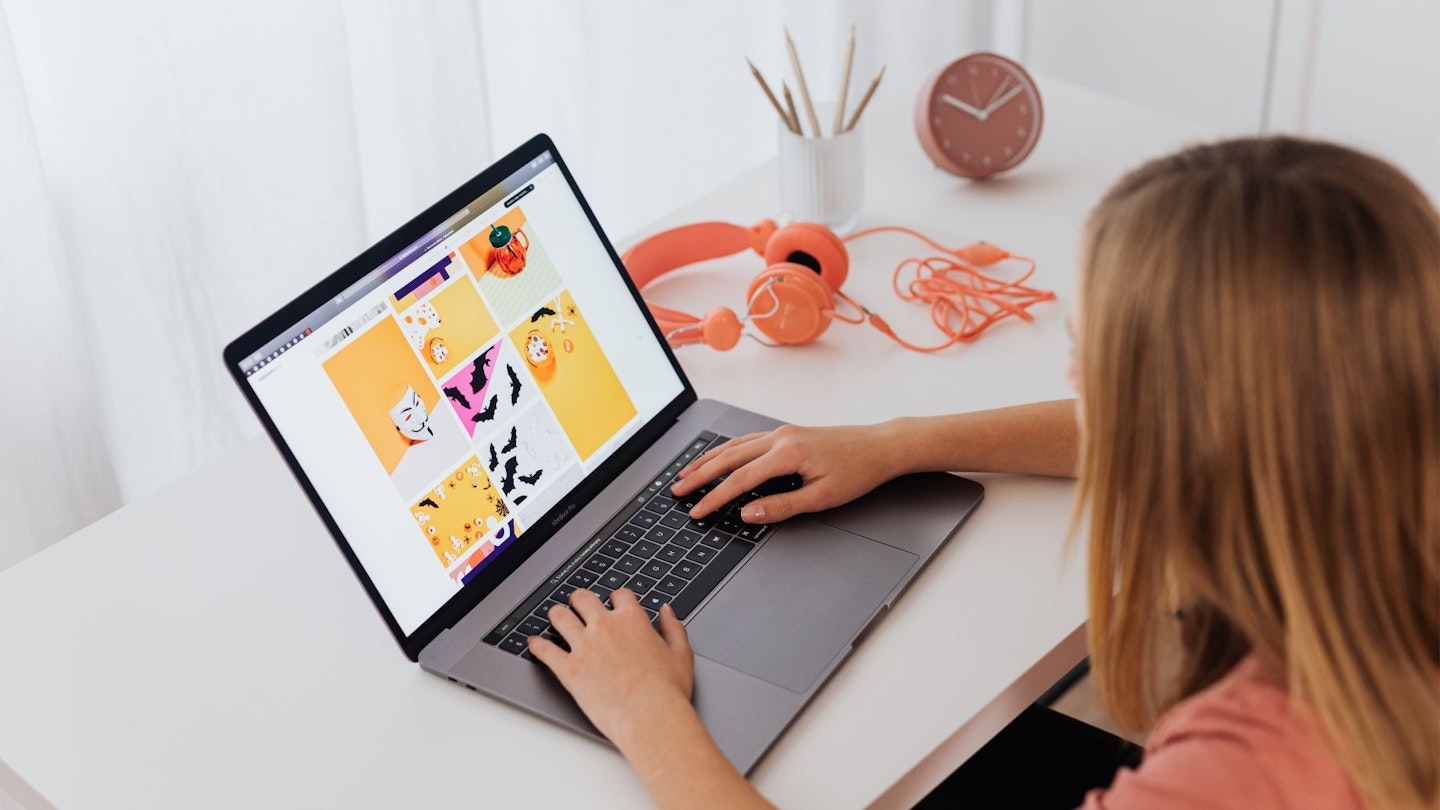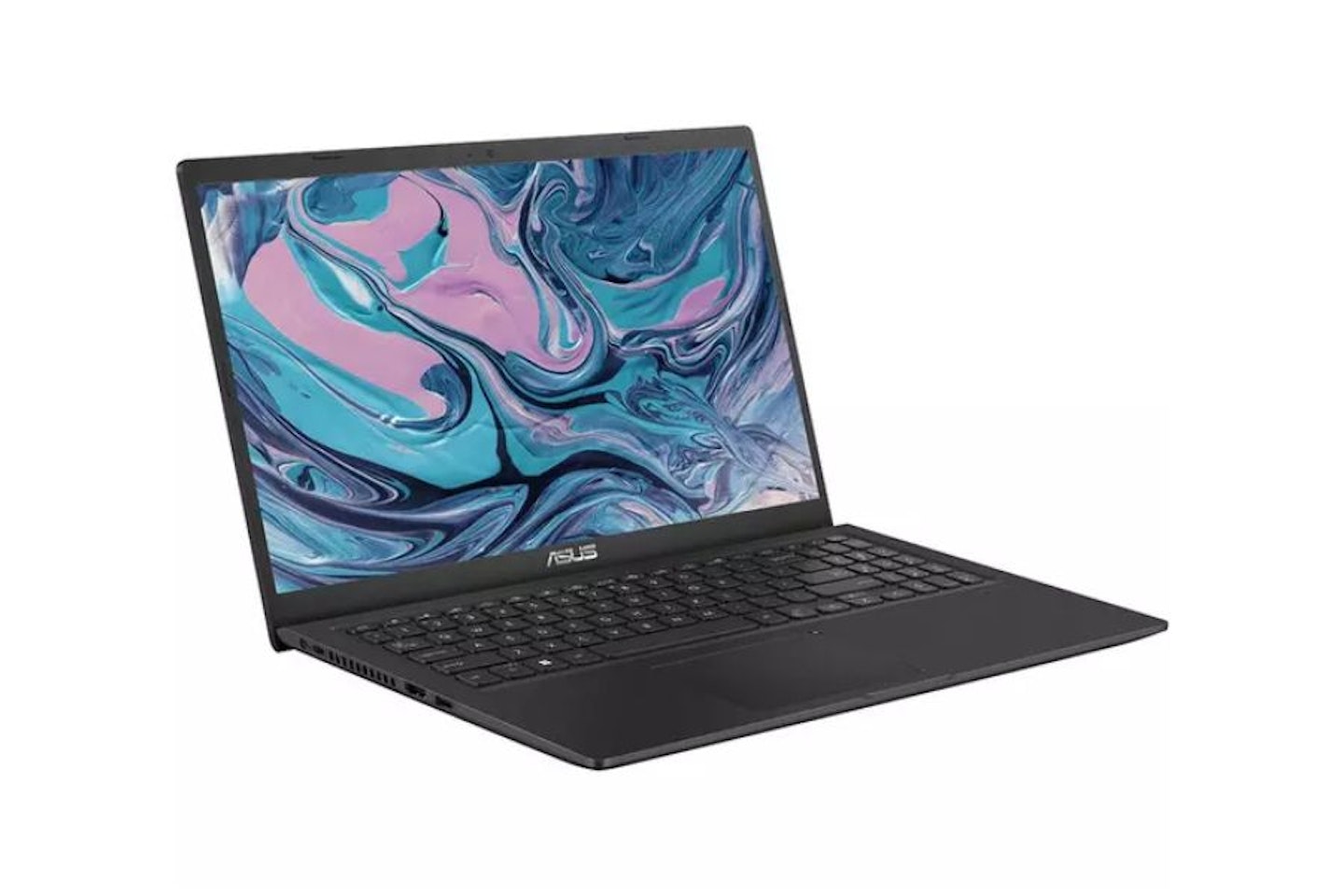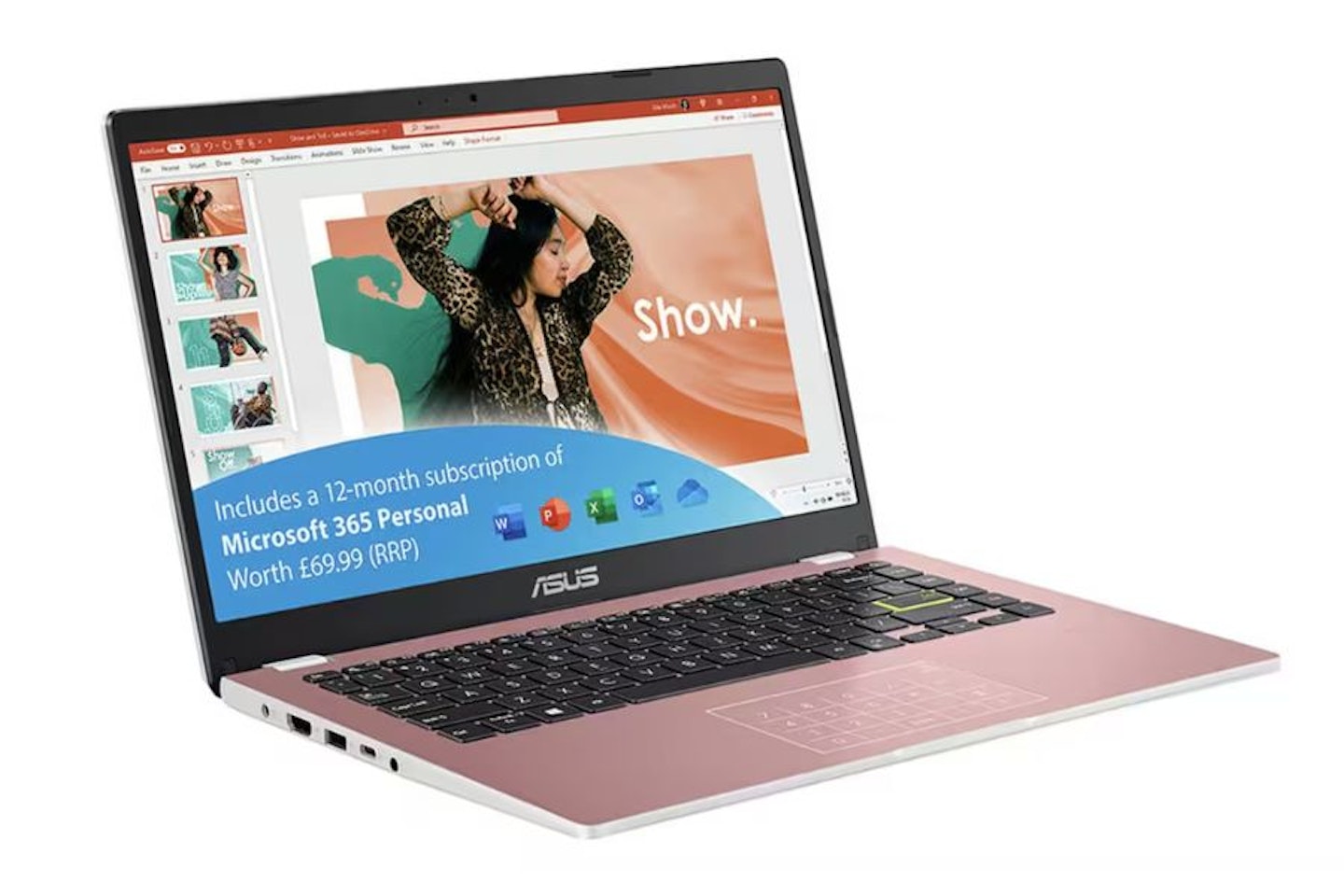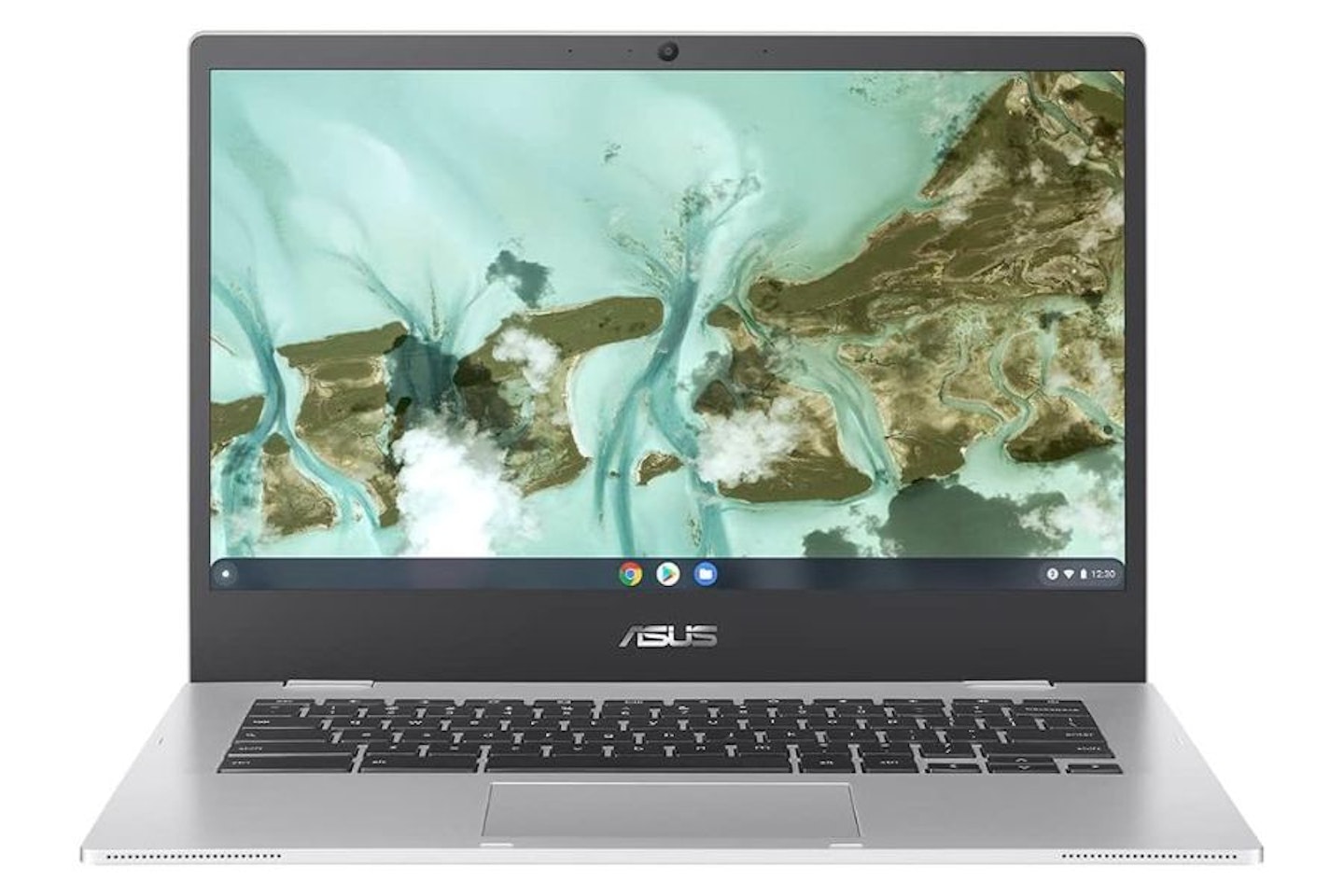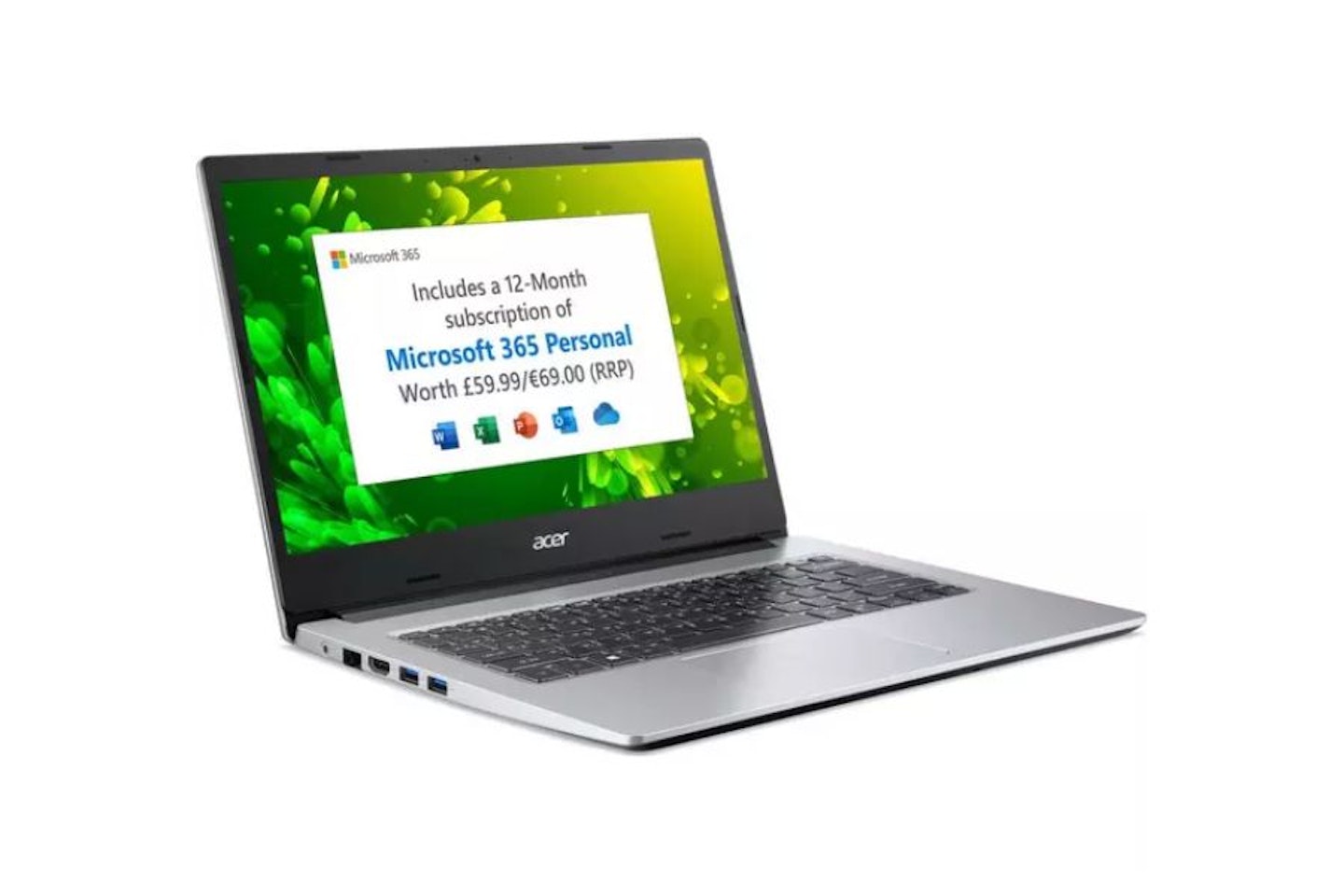In most cases, the very best laptops on the market will cost you a sizeable sum of cash, but that doesn't mean you can't find some quality laptops under £300. These solid machines are more than capable of casual browsing and note-taking, making them fantastic student laptops for intense coursework sessions, and the mandatory post-study Netflix binge too.
Purchasing a laptop can be a confusing, frustrating and highly expensive experience for shoppers eager for an upgrade, but laptops are an essential technology in our busy modern lives, sooner or later you'll desperately need one.
The best laptops under £300 in 2024 at a glance:
But with developing technologies and dizzying tech hardware to decipher, you're likely to struggle if you're unfamiliar with the world of laptops, and finding what truly is a good laptop under £300 can be a minefield.
Fret not, however, at What's The Best we've done our due diligence to find the very best laptop deals for you, and this year's one of the best yet. From the ultimate laptop brands, and the most competitive prices, we've pooled together our ten favourite laptops under £300, so no more painful googling and repetitive head-scratching.
The best laptops under £300 of 2024:
Please note: All prices are correct at the time of writing. Prices, stock and deals are subject to change without notice.
Best overall laptop under £300
Taking the top spot of our laptops under £300 roundup, the ASUS Vivobook 15 X1500EA is a stellar machine ideal for basic working tasks, utilising the Microsoft Office package, and some solid entertainment capabilities.
Well-made with solid plastic construction and a metal support brace beneath the keyboard to reduce flexing, the ASUS Vivobook 15 X1500EA provides users with a tough, yet lightweight laptop at around 1.8 kg, making it very ideal for a lengthy morning commute.
As far as hardware goes, the ASUS Vivobook 15 X1500EA impresses with 256GB of SSD storage and 8 GB of RAM, as well as its trusty Intel Pentium Gold 7505 processor which offers smooth and stable multitasking. Performance, therefore, is certainly commendable from this budget laptop and is certainly hard to fault.
Where we find fault in the ASUS Vivobook 15 X1500EA, however, is its slightly lacklustre battery life, which offers only six hours of use on a full charge. We'd certainly like a little more to make it more viable for use on a commute or when you're away from a plug for a day, but it's otherwise a non-issue in our modern world, where few places are without a place to charge.
The ASUS Vivobook 15 X1500EA is a terrific choice for anyone on a budget and offers perhaps the most bang for your buck this year.
Pros
- Impressive build quality with a lightweight design
- Solid hardware for smooth multitasking
- Excellent value for high build quality
Cons
- Fairly low battery life
| CPU: | Intel Pentium Gold 7505 Processor |
| GPU: | Intel Iris Xe Graphics |
| RAM: | 8 GB |
| Storage: | 256 GB SSD |
| Display: | 15.6 inches |
| Battery life: | Up to six hours |
| Dimensions: | 18 x 360 x 235 mm (H x W x D) |
| Weight: | 1.8 kg |
Best performance laptop under £300
Perhaps the best performance you'll get from a laptop under £300, ACER's 515 Chromebook is a breath of fresh air amongst countless budget laptops with particularly limited hardware, and its quality is more than a little apparent upon use.
Constructed using aluminium, the ACER 515 feels incredibly impressive to use on the go, and nothing beats the sturdiness of a metal laptop made with military-grade durability. Classically designed with a familiar, yet inviting aesthetic, the Acer 515 leaves users feeling truly satisfied with their purchase.
When it comes to hardware, the ACER 515 has plenty of performance to offer: 8 GB of RAM, 256 GB of SSD storage, and a reliable 12th-generation Intel i3 processor, performance is second to none on the ACER 515 for the cash.
Where some may struggle, however, is the 515's use of ChromeOS, an alternative to Microsoft's well-established operating system. ChromeOS is solid and optimised for those who always have several tabs open at once, but for newcomers, it can be slightly daunting to begin using an entirely new operating system altogether.
However, Google's intuitive design and inviting aesthetic quickly draw you in, and you'll scarcely look back: the ACER 515 is a great laptop at a bargain price, and shouldn't be passed on if you're looking for one of the best deals of the year.
Pros
- Military-grade durability for a long-lasting laptop experience
- Fantastic 8 GB of RAM and 256 GB of SSD storage
- Impressive full HD screen quality
Cons
- ChromeOS isn't for everyone
| CPU: | Intel® Core™ i3-1215U Processor |
| GPU: | Integrated |
| RAM: | 8 GB |
| Storage: | 256 GB SSD |
| Display: | 15.6-inch, Full HD 1920 x 1080p |
| Battery life: | Up to 10 hours |
| Dimensions: | 19.95 x 360.6 x 238.4 mm (H x W x D) |
| Weight: | 1.68 kg |
Best budget laptop under £300
A perfect choice for students and office workers alike, the ASUS 14 E410 laptop and Microsoft bundle are ideal for those looking to delve into work as immediately and conveniently as possible, without the hassle of buying it separately.
A beautifully designed aluminium laptop, the ASUS 14 E410 looks and feels solid in use, with a slightly odd, yet appealing glyph-covered lid that gives the laptop a premium aesthetic. Certainly cheaper than our other options, there are unquestionably some cutbacks to the E410's performance, namely from its 4 GB of RAM and low 64 GB of SSD storage.
Performance on the E410 is undeniably a little sluggish, especially if you're planning on indulging in creative projects, but if you're strategic in the level of multitasking you perform at once, the E410 can work surprisingly well as a dedicated note-taking machine.
Ideal for entry-level users investing in their first laptop, the ASUS E410 14-inch laptop is perfect for getting work done at a fraction of the price of a regular laptop.
Pros
- Solid aluminium design
- Incredibly cheap
- Ideal for students and entry-level users
Cons
- Performance is fairly mediocre
| CPU: | Intel Celeron - N4020 |
| GPU: | Intel UHD 600 |
| RAM: | 4 GB |
| Storage: | 64 GB |
| Display: | 14 inches |
| Battery life: | Up to 12 hours |
| Dimensions: | 18.4 x 375 x 217 mm (H x W x D) |
| Weight: | 1.3 kg |
Best HP laptop under £300
A powerful choice for budget buyers, HP is well-known for providing powerful laptops at competitive prices, and the HP 15s-fq5585sa laptop is a favourite amongst budget buyers on account of its reliable hardware, solid build quality and visually appealing full HD screen.
Certainly, on the larger side of laptops, the HP 15s-fq5585sa's full-size keyboard is an ideal laptop for programmers, without being outrageously expensive. As for hardware, the 15s's Intel i3 processor and 8 GB of RAM offer good performance, and its 128 GB of SSD storage allow for decently sized projects that can be quickly accessed.
One drawback of the HP 15s, however, has to be its weaker build quality, its plastic-feeling keys aren't great, and there's a lot of flex to it in use. In our opinion, it's a worthwhile sacrifice to make for what is some of the best performance at its price range.
A great all-purpose laptop for less than £300, the HP 15s is a solid choice for anyone in search of a bargain this year.
Pros
- Solid performance laptop for budget buyers
- Large size with ultra-thin bezels
- impressive 12th generation CPU
Cons
- Fairly plasticky build quality
| CPU: | Intel® Core™ i3-1215U Processor |
| GPU: | Intel UHD Graphics |
| RAM: | 8 GB |
| Storage: | 128 GB SSD |
| Display: | 15.6 inches, Full HD 1920 x 1080p |
| Battery life: | Up to 7 hours 30 minutes |
| Dimensions: | 17.9 x 358.5 x 242 mm (H x W x D) |
| Weight: | 1.69 kg |
Best laptop design under £200
Ideal for those on a small budget, the ASUS Chromebook 14 is an ideal replacement or first laptop for students looking to grab a laptop at an ultra-low price. Utilising ChromeOS, an efficient operating system that makes the most out of lower-end hardware, the ASUS CX1400CMA is solid in its functionality, despite its limitations.
Yes, as with most cheaper laptops, the performance of the Chromebook 14 CX1400CMA isn't the best, with some fairly limited hardware which is to be expected at its price. 64 GB of SSD storage and 4GB of RAM make the CX1400CMA fairly low-end in comparison to other slightly pricier laptops on the market. And yet, the CX1400CMA manages to utilise its hardware well, providing stable performance with very little multitasking.
Solidly made, and made for those in need of a solidly built budget laptop that'll last a good while: the ASUS Chromebook 14 is an impressive choice, despite its shortcomings, and is a must for those with a lower price range.
Pros
- Display is quite good
- Simple to set up and get started
Cons
- Keyboard takes getting used to
| CPU: | Intel Celeron N4020 |
| GPU: | Integrated |
| RAM: | 4 GB |
| Storage: | 64 GB |
| Display: | 14 inches |
| Battery life: | Up to 12 hours |
| Dimensions: | 180 x 322.6 x 228 mm (H x W x D) |
| Weight: | 1.5 kg |
Best storage capacity laptop for under £300
The perfect entry-level laptop that's incredibly durable and offers good performance at its price, the ACER Aspire 1 is a reliable option for those starting their study or work journeys. Featuring a full aluminium chassis, the Aspire 1's durability is largely unparalleled in the world of budget laptops. This metal build feels premium in use and is made to weather hours of travel and daily wear and tear.
Up to eight hours of battery life with moderate use, and at 14 inches, the Acer Aspire 1 is perfectly ideal for commuting, comfortably fitting in most backpacks with ease. At just over 1.45 kg, it's also comparatively lightweight to its low-budget competition. Its 128 GB of storage, while not massive, provides comfortable storage, provided you're not working on particularly large projects.
The Aspire 1's weak 4 GB of RAM doesn't bode well for those who are in need of a multitasking laptop: it's on the low side to be sure, even at its price.
But for those who are likely to spend their days in Word documents with little need for high performance, you won't need much power from your laptop, so the Acer Aspire 1 is a solid choice that isn't going to break the bank.
Pros
- Great build quality
- Good storage
- Includes Microsoft Office package
Cons
- Fairly low RAM
| CPU: | Intel Celeron N4500 |
| GPU: | Integrated |
| RAM: | 4 GB |
| Storage: | 128 GB |
| Display: | 14 inches |
| Battery life: | Up to eight hours |
| Dimensions: | 19.9 x 328 x 236 mm (H x W x D) |
| Weight: | 1.45 kg |
Best 2-in-1 laptop under £300
The ASUS CX1's 2-in-1 Chromebook design is a rarity amongst budget laptops: full touchscreen functionality, and a 360-degree folding design, this laptop under £300 can certainly hold its own as a tablet too, which is fantastic for those who prefer a manual note-taking approach.
The comfort of a touchscreen is enough to convince most of this laptop, but there's also plenty to enjoy from its comfortable typing and generally solid build quality.
At its smaller size, and budget price, however, there are performance setbacks: its 64 GB of eMMc storage isn't enough in the long term, you'll need an external storage device later down the line, and then there's its weaker 4 GB of RAM, which is by no means exceptional.
And yet, we can't help but recommend this budget laptop oddity: it's a fantastic deal for what is a typically expensive technology.
Pros
- Solid 2-in-1 Chromebook design
- Well-made with a good quality feel
- Good battery life
Cons
- Fairly entry-level hardware
| CPU: | Intel Celeron N4500 Processor |
| GPU: | Intel UHD |
| RAM: | 4 GB |
| Storage: | 64 GB eMMc |
| Display: | 11.6 inches |
| Battery life: | Up to nine hours |
| Dimensions: | 18.8 x 292 x 205.3 mm (H x W x D) |
| Weight: | 1.2 kg |
Best battery life laptop under £300
 LENOVO
LENOVO Ideal for commuting writers and Netflix binge-watchers alike, the Lenovo IdeaPad Slim 3 is a beautifully designed budget laptop with impressive build quality, a slick design and plenty of battery life for your on-the-go needs.
Having a total of 13.5 hours of battery life, the IdeaPad Slim 3 is tough to beat when it comes to its commuting potential and is especially useful for those who spend their days away from a nearby port, we're looking at you, students.
As is common amongst budget laptops, however, the IdeaPad Slim 3's low 4 GB of RAM and ultimately disappointing 64 GB of SSD storage don't amount to much in terms of long-term use, which is a shame.
At its price, however, many laptops share similar specifications, and what separates this laptop is its fantastic build quality. Visually gorgeous, and built to last, the Lenovo IdeaPad Slim 3 remains one of the best laptops at its price range.
Pros
- Superb battery life
- Reliable keys
Cons
- GPU is underwhelming
| CPU: | MediaTek Kompanio 520 Processor |
| GPU: | Mali-G52 |
| RAM: | 4 GB |
| Storage: | 64 GB |
| Display: | 14 inches |
| Battery life: | Up to 13.5 hrs |
| Dimensions: | 18.6 x 325.9 x 221.8 mm (H x W x D) |
| Weight: | 1.3 kg |
Best ultra-budget laptop under £300
At a fraction of the price of other laptops on the market, the ASUS CX1 Chromebook is perfectly ideal for budget buyers looking for entertainment on the go at a bargain price.
This 11.6-inch laptop is particularly small, which might sound unappealing until you consider its commuting capabilities. Its ultra-small design can comfortably fit even in smaller backpacks, and it's perfect for carrying about the home with ease.
Brilliant for simple tasks, especially streaming your favourite shows, the ASUS CX1's ultra-low price is great, but it's not ideal for larger computing tasks. The CX1's 4 GB of RAM and 64 GB of storage place it at the lower end of the laptop roster, but it's to be expected at its price.
Well-made and ideal for comfortable streaming, the ASUS CX1 is a solid choice for those looking for a no-stakes laptop to relax with anywhere you go.
Pros
- Fantastic value
- Solid 10-hour battery life
- Lightweight design
Cons
- Weak performance
| CPU: | Intel Celeron N4500 processor |
| GPU: | Intel UHD |
| RAM: | 4 GB |
| Storage: | 64 GB |
| Display: | 11.6 Inches |
| Battery life: | Up to 10 hrs |
| Dimensions: | 18.8 x 292 x 205.3 mm (H x W x D) |
| Weight: | 1.21 kg |
Best refurbished laptop under £300
If you've never considered buying a refurbished laptop, perhaps this Dell Lattitude 5400 might convince you. With a whopping 256 GB of storage, 16 GB of RAM, and more, this laptop is a diamond in the rough on a market overflowing with low RAM and storage.
Sturdily built, with a plastic chassis that doesn't feel cheap, the Dell Lattitude 5400 provides plenty of rugged durability for peace of mind, and has a strong, tactile keyboard for day-long typing.
It's components, while mostly strong, are hindered by the eigth generation Intel CPU, which is a far cry from the current 14th generation of Intel CPUs. An eighth generation Intel CPU is bound to be a little slow, which is a bit of a shame, but the Dell Lattitude 5400 is carried well by its other components.
An unbeatable amount of storage, a fantastic 16 GB of RAM, all packed in a neat 14-inch laptop, the Dell Lattitude is a great laptop for those in need of a little extra power, who also don't mind a refurbished laptop.
Pros
- Fantastic 16GB of RAM
- Great storage for larger projects
- Amazing price
Cons
- Slower Intel CPU
| CPU: | Intel CORE I5-8365U |
| GPU: | Intel UHD Graphics 620 |
| RAM: | 16 GB |
| Storage: | 256GB SSD |
| Display: | 14 Inch, 1366 x 768p |
| Battery life: | Up to six hours |
| Dimensions: | 19.6 x 323 x 216 mm (H x W x D) |
| Weight: | 1.48 kg |
How to choose the best laptops under £300:

Key terms you need to know:
CPU: The Central Processing Unit, or CPU, is widely considered to be the 'brain' of the laptop, and for good reason. Its primary function is to send data to the necessary components for execution. Faster CPUs can send data quicker, and a greater number of cores means that multiple tasks can be executed simultaneously.
GPU: The GPU, or the Graphical Processing Unit, is a component responsible specifically for the processing of graphical elements displayed on the laptop.
RAM: Random Access Memory is a temporary storage space for data that's used by browsers and applications that deal with a lot of data that doesn't need permanently saving. The more RAM, the smoother the performance of the laptop.
SSD: SSDs, or Solid State Drives, are a type of storage that uses digital data storage, compared to the older analogue HDD storage. It allows for instant data access, which is ideal for those delving into their file explorer.
Operating system: The Operating System of a computer, or OS, is what you interact with on your screen: it's Windows 11 or ChromeOS, the system of computer navigation.
Is 8 GB of RAM enough for a laptop?
When it comes to laptops under £300, the best you're going to get is 8 GB of RAM, unless you buy refurbished. But how does it function?
If you're working on a fairly basic, low-end software, streaming television shows, or you've got a few tabs open, 8 GB of RAM is fantastic. It's the perfect amount of basic laptop needs, and doesn't become sluggish quickly, unlike having 4 GB of RAM.
How do I pick a laptop?
Decide on a budget: picking a laptop, while fun, can be tricky. First and foremost, what do you need the laptop for? If your need is urgent, consider what you need it for, is it for writing up projects on Microsoft Word, or something a little more demanding?
Although a deal can be fantastic, there are some spectacular laptops under £500 that might suit your needs better, especially if you're delving into large coding projects or creative tasks.
Look for the best hardware: now that you've decided on a price, you'll need to figure out the best hardware you can get in your price range. At £300, the extent of power from your hardware is slightly limited, you're looking at a maximum of 8 GB of RAM and up to 256 GB of SSD storage at a push.
The CPU also isn't likely to be exceptional, but getting a 12th-generation Intel CPU is a win.
Pick an OS and style: Lastly, you should consider the operating system: this is what you'll be using to navigate your laptop, so it's important that you're familiar with it, or you're comfortable learning a new OS.
Then there's the style: it's better to enjoy how your laptop looks and feels at the cost of performance in some regards: poor quality screens and flexing keyboards can be awful to use and don't give you the highest confidence in their longevity.
FAQs: your questions answered

Are laptops under £300 worth it?
All-in-all, there are some brilliant laptop options for less than £300: if you're looking for a dedicated note-taking laptop or you're interested in watching some shows in the evening, this selection of laptops is bound to please.
But you should certainly measure your expectations, you cannot expect these laptops to run cutting-edge gaming or any other demanding programs, there are limitations, despite how good they are.
What's the most important component in a laptop?
The most important component of a laptop is undoubtedly the CPU. Without a brain, your laptop is useless, and the faster the CPU, the quicker processes can be executed.
Most cheaper laptops don't have a lot of CPU power, but choosing relatively new CPUs from Intel or AMD are a safe bet for good navigation and performance. A laptop is only as strong as its CPU.
is 64 GB of storage enough?
64 GB of storage is certainly not a lot, and isn't going to go far in the long run: you can certainly save a substantial amount of Word documents, but any larger programs will require an external storage drive, which may prove costly over time.
For those looking to stream shows, or simply browse social media, 64 GB is plenty, so it shouldn't concern you much.
Ryan Houghton is a Tech Writer and Reviewer for What’s The Best, known best for his expertise in gaming, with a particular soft spot for PC gaming, audio tech, televisions and smartphones.
Diligently writing for What’s The Best for almost two years, there are very few tech products Ryan hasn’t had his hands on to review; televisions, headphones, folding phones and even LEGO, if it’s nerdy, he’ll be there.
His well-versed history as one of the resident techies at What’s The Best has kept him keen to uncover the very best deals, savings and offers for those in need of a cracking deal to upgrade their setup.
In his downtime, Ryan most likely has his nose buried in a fantasy book, or his eyes glued to a screen whilst playing a tough-as-nails Soulslike or leisurely RPG, indulging in most forms of escapism where possible.
Subscribe to the What's The Best Newsletter to keep up to date with more of the latest reviews and recommendations from the rest of the What's The Best team.
Subscribe to the What's The Best Newsletter to keep up to date with more of the latest reviews and recommendations from the rest of the What's The Best team.
